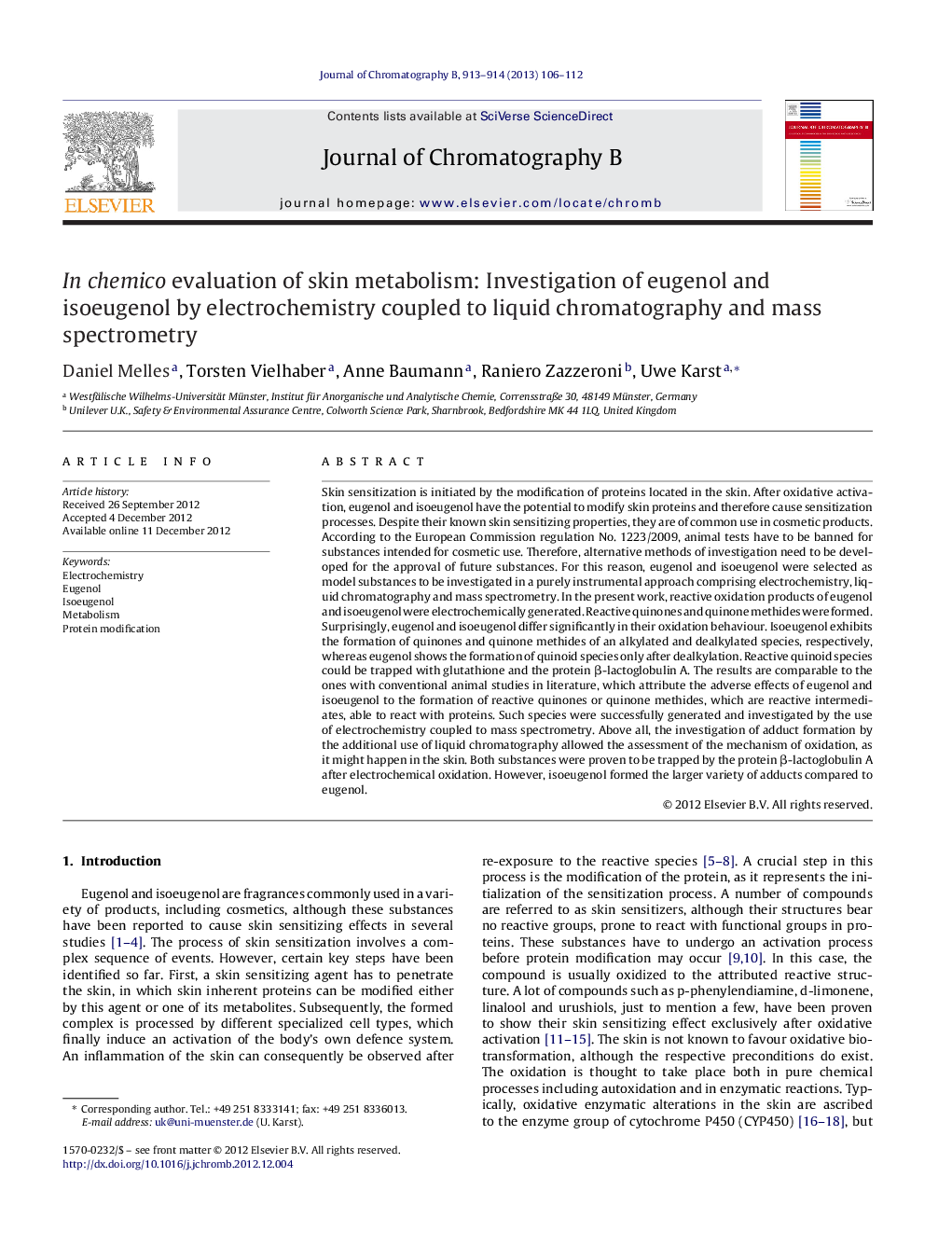| کد مقاله | کد نشریه | سال انتشار | مقاله انگلیسی | نسخه تمام متن |
|---|---|---|---|---|
| 1213003 | 1494117 | 2013 | 7 صفحه PDF | دانلود رایگان |

Skin sensitization is initiated by the modification of proteins located in the skin. After oxidative activation, eugenol and isoeugenol have the potential to modify skin proteins and therefore cause sensitization processes. Despite their known skin sensitizing properties, they are of common use in cosmetic products. According to the European Commission regulation No. 1223/2009, animal tests have to be banned for substances intended for cosmetic use. Therefore, alternative methods of investigation need to be developed for the approval of future substances. For this reason, eugenol and isoeugenol were selected as model substances to be investigated in a purely instrumental approach comprising electrochemistry, liquid chromatography and mass spectrometry. In the present work, reactive oxidation products of eugenol and isoeugenol were electrochemically generated. Reactive quinones and quinone methides were formed. Surprisingly, eugenol and isoeugenol differ significantly in their oxidation behaviour. Isoeugenol exhibits the formation of quinones and quinone methides of an alkylated and dealkylated species, respectively, whereas eugenol shows the formation of quinoid species only after dealkylation. Reactive quinoid species could be trapped with glutathione and the protein β-lactoglobulin A. The results are comparable to the ones with conventional animal studies in literature, which attribute the adverse effects of eugenol and isoeugenol to the formation of reactive quinones or quinone methides, which are reactive intermediates, able to react with proteins. Such species were successfully generated and investigated by the use of electrochemistry coupled to mass spectrometry. Above all, the investigation of adduct formation by the additional use of liquid chromatography allowed the assessment of the mechanism of oxidation, as it might happen in the skin. Both substances were proven to be trapped by the protein β-lactoglobulin A after electrochemical oxidation. However, isoeugenol formed the larger variety of adducts compared to eugenol.
► Activation of eugenol and isoeugenol into protein reactive haptens was achieved.
► Electrochemistry coupled to liquid chromatography and mass spectrometry was used.
► Protein modification as a key step in the hapten concept was performed.
► EC/LC/MS serves as tool for the assessment of pre- and pro-haptens.
Journal: Journal of Chromatography B - Volumes 913–914, 15 January 2013, Pages 106–112